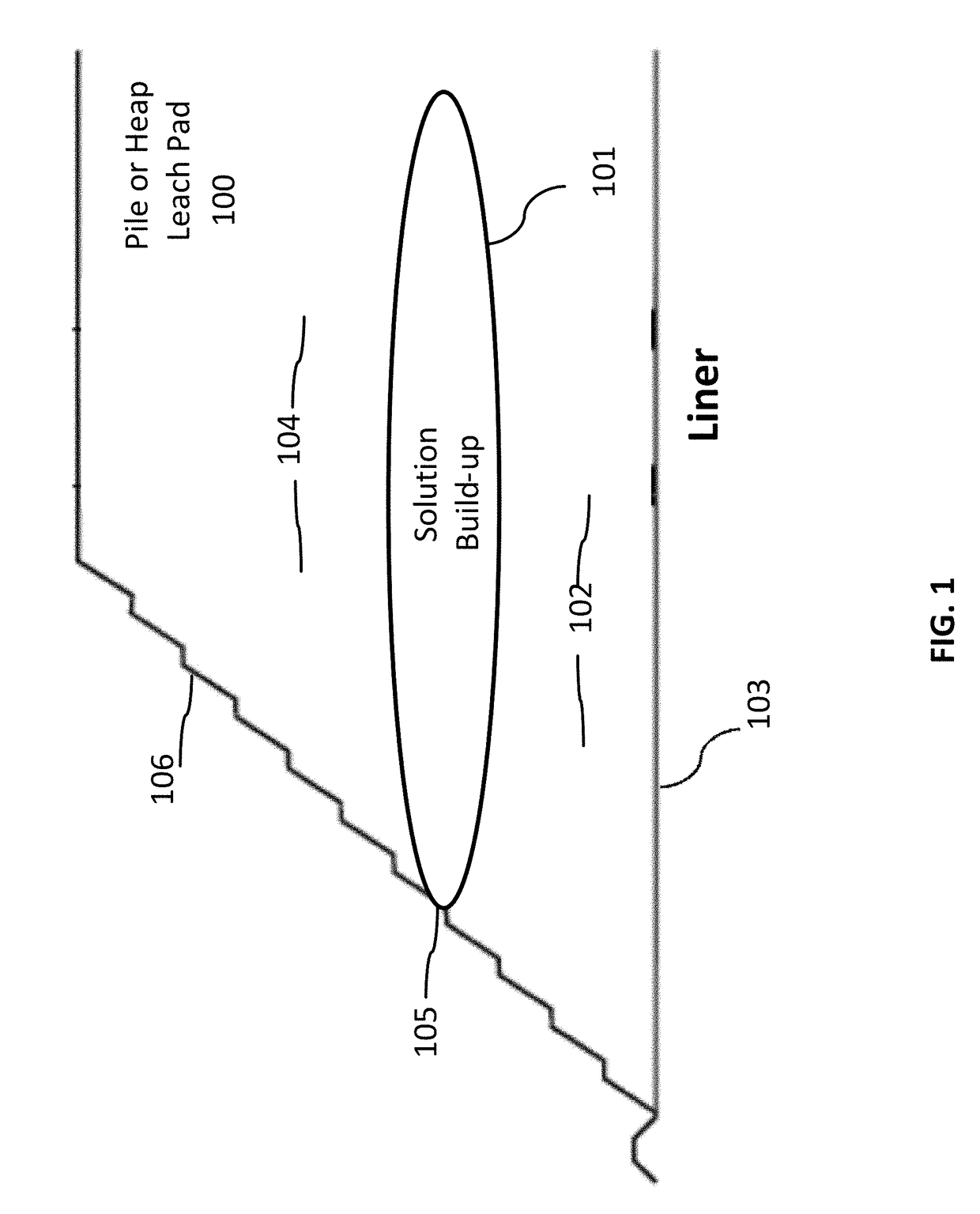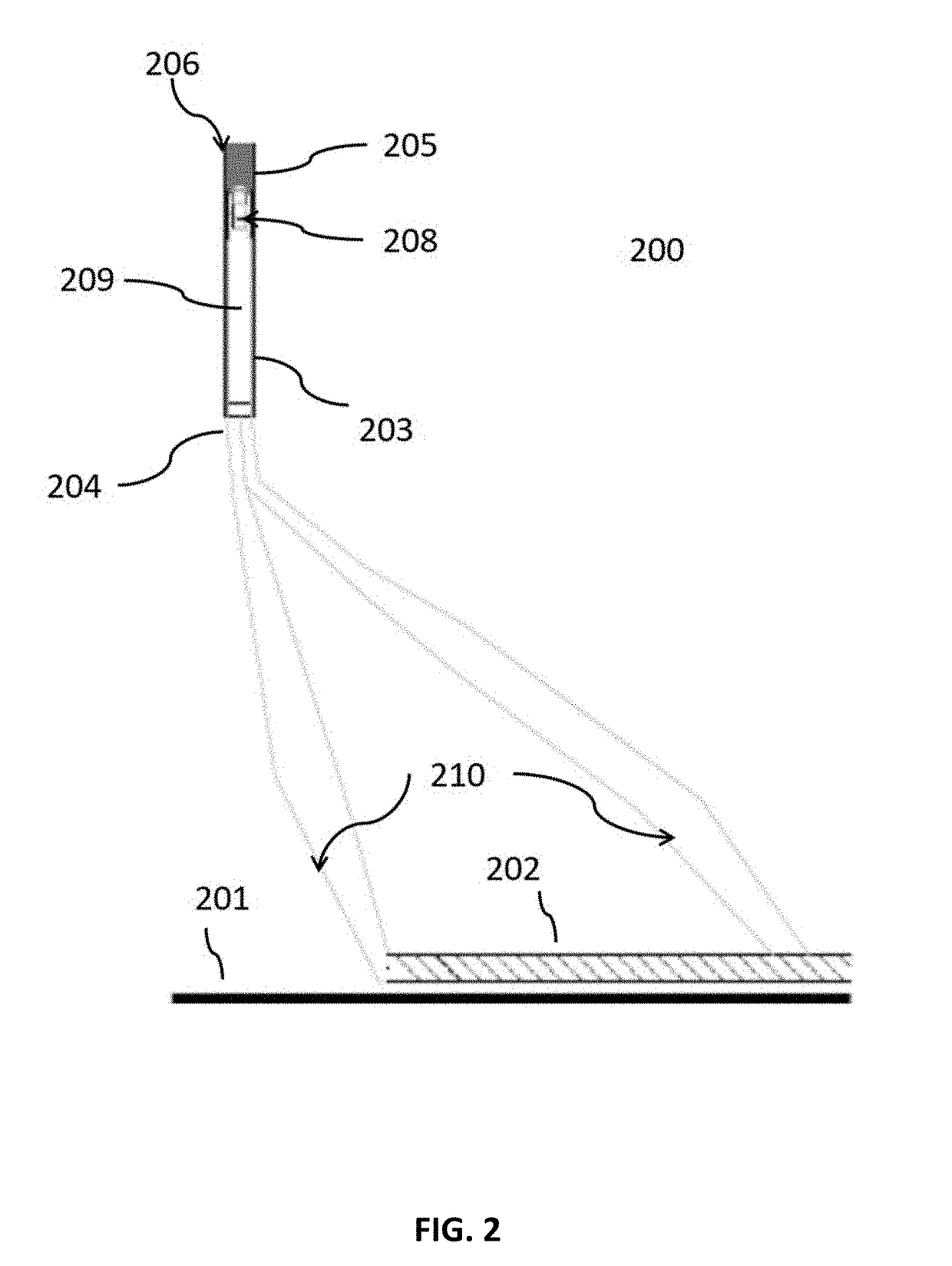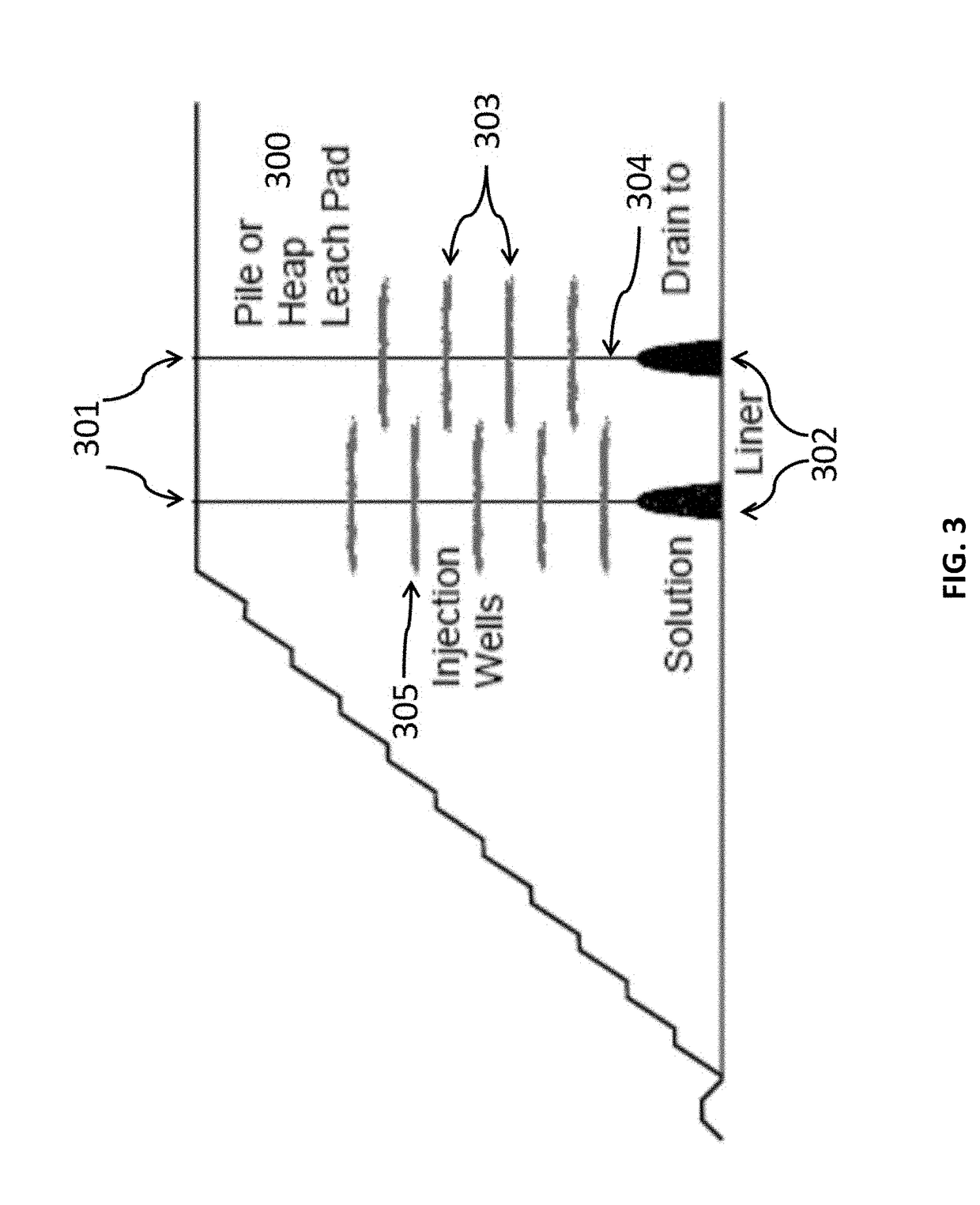Systems and methods for improvement of metal recovery and stability of piles
a technology of metal recovery and stability, applied in the direction of process efficiency improvement, etc., can solve the problems of not being able to uniformly contact the heap solution, reducing permeability, and leaving those portions unleached or under-leached, so as to enhance inter-particle cohesion and friction, reduce the weight of the material, and improve the resistance to pile movement
- Summary
- Abstract
- Description
- Claims
- Application Information
AI Technical Summary
Benefits of technology
Problems solved by technology
Method used
Image
Examples
Embodiment Construction
[0031]As used herein, the terms “heap,”“heap leach,”“dumps,”“waste dumps,”“landfill,”“sanitary landfills,”“process tails,”“stockpiles,”“process piles,”“garbage dumps,”“refuse,”“deposit,”“rubbish pile,”“industrial and urban waste,”“lot,” as well as any material placed in a pile for temporary storage or long term storage or disposal (collectively referred to herein as a “pile”), illustrate an application of the systems and methods described herein. The disclosed systems and methods are not limited to use with heaps and for heap leaching. Rather, the embodiments described herein apply to all piles constructed of collected material (whether lined, unlined or contained) and / or that are open to the environment. As such, the systems and methods described herein may be used to treat any material in storage or disposal in a pile, impoundment, dump, landfill, (industrial, municipal, garbage, sanitary, which are collectively referred to herein as “sanitary”), and used for any type of percolati...
PUM
| Property | Measurement | Unit |
|---|---|---|
| Electrical resistance | aaaaa | aaaaa |
| Volume | aaaaa | aaaaa |
| Solubility (mass) | aaaaa | aaaaa |
Abstract
Description
Claims
Application Information
 Login to View More
Login to View More - R&D
- Intellectual Property
- Life Sciences
- Materials
- Tech Scout
- Unparalleled Data Quality
- Higher Quality Content
- 60% Fewer Hallucinations
Browse by: Latest US Patents, China's latest patents, Technical Efficacy Thesaurus, Application Domain, Technology Topic, Popular Technical Reports.
© 2025 PatSnap. All rights reserved.Legal|Privacy policy|Modern Slavery Act Transparency Statement|Sitemap|About US| Contact US: help@patsnap.com



